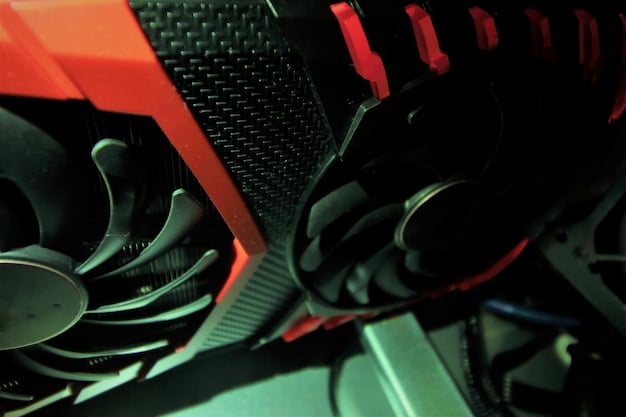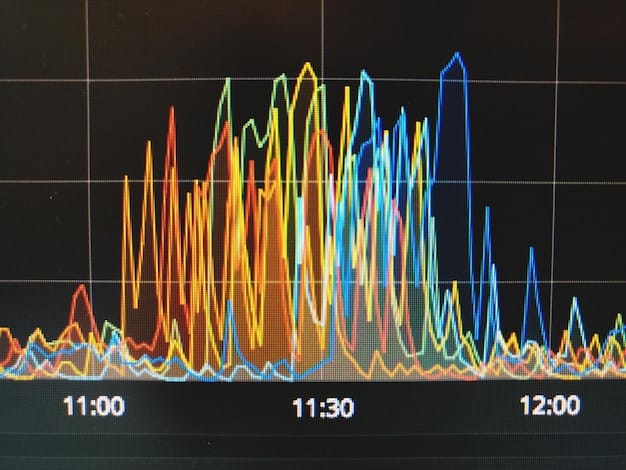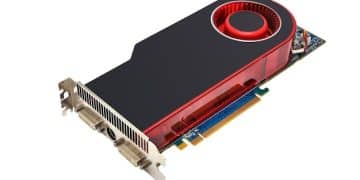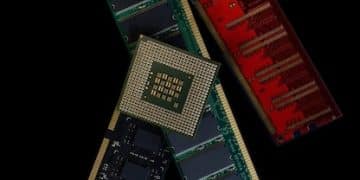NVIDIA DLSS 3.5: Is Frame Generation Worth Upgrading?

NVIDIA DLSS 3.5 introduces Ray Reconstruction, enhancing image quality in ray-traced games, but the value of upgrading depends on whether the visual improvements justify the potential performance costs and compatibility issues with older RTX 40 series cards.
Is the new NVIDIA DLSS 3.5 worth the upgrade for RTX 40 series owners? This is a question many gamers are asking, weighing the pros and cons of this latest technology.
Understanding NVIDIA DLSS 3.5
NVIDIA DLSS (Deep Learning Super Sampling) has revolutionized gaming graphics by using AI to upscale lower-resolution images to higher resolutions, providing better performance without significant loss in visual fidelity. With each iteration, NVIDIA has refined this technology, and DLSS 3.5 introduces a significant update with Ray Reconstruction.
What is Ray Reconstruction?
Ray Reconstruction is a new AI-powered feature that replaces traditional hand-tuned denoisers used in ray tracing. By training an AI model on a vast database of high-quality ray-traced images, Ray Reconstruction can intelligently reconstruct ray-traced scenes, leading to improved image quality, reduced ghosting, and better handling of dynamic lighting effects.
Benefits of DLSS 3.5
The primary benefit is enhanced visual fidelity in ray-traced games. Ray Reconstruction offers more stable and clearer images, especially in scenes with complex lighting or fast motion. This results in a more immersive and visually pleasing gaming experience.
- Improved image clarity in ray-traced environments.
- Reduced ghosting and artifacts.
- Better handling of dynamic lighting and reflections.
- Potential performance gains through more efficient denoising.
In conclusion, NVIDIA DLSS 3.5 takes a significant leap forward by introducing Ray Reconstruction, promising improved image quality and performance in ray-traced games. With the promise of AI-enhanced graphics, gamers are eager to explore the enhanced visual experiences it offers.
DLSS 3.5 vs. DLSS 3: Key Differences

While DLSS 3 introduced Frame Generation, DLSS 3.5 focuses on enhancing image quality, especially in ray-traced environments. Understanding the differences between these versions is crucial for deciding whether to upgrade.
Focus on Image Quality vs. Frame Generation
DLSS 3 primarily aimed to boost frame rates through Frame Generation, which creates entirely new frames using AI. DLSS 3.5, on the other hand, refines the image quality by improving the way ray-traced images are reconstructed, ensuring a cleaner and more detailed visual output.
Ray Reconstruction in Detail
Ray Reconstruction replaces the standard denoisers with an AI model trained to produce higher-quality images from ray-tracing data. This results in fewer visual artifacts and a more natural look, particularly in areas with complex lighting and reflections.
- DLSS 3 boosts frame rates with Frame Generation.
- DLSS 3.5 enhances image quality with Ray Reconstruction.
- Ray Reconstruction reduces visual artifacts in ray-traced scenes.
- DLSS 3.5 provides a more visually accurate gaming experience.
In conclusion, DLSS 3.5 distinguishes itself from DLSS 3 by emphasizing visual fidelity and leveraging the power of AI-driven Ray Reconstruction. The image quality improvement is particularly beneficial for gamers who prioritize visual experiences over raw frame rate boosts.
Performance Impact on RTX 40 Series
While DLSS 3.5 enhances visual quality, it’s essential to consider its impact on performance, particularly for RTX 40 series cards. The overhead of Ray Reconstruction can affect frame rates, making it crucial to understand how it performs on different hardware configurations.
Benchmarking DLSS 3.5
Initial benchmarks indicate that DLSS 3.5 can have a varying impact on performance. While some games show a slight performance decrease due to the additional processing required for Ray Reconstruction, others may see an overall improvement thanks to more efficient denoising.
Hardware Considerations
The performance impact of DLSS 3.5 can depend on the specific RTX 40 series card. High-end cards like the RTX 4080 and RTX 4090 can handle Ray Reconstruction with minimal performance loss, while lower-end cards such as the RTX 4060 may experience more noticeable frame rate drops. Optimizing game settings becomes crucial on these cards to balance visual quality and performance.

- Performance impact varies depending on the game and hardware.
- High-end RTX 40 series cards handle Ray Reconstruction better.
- Optimization of game settings is essential for balancing performance.
- Monitor frame rates to ensure smooth gameplay.
In conclusion, assessing the performance impact of DLSS 3.5 on RTX 40 series cards is essential to balance visual enhancements and smooth gameplay. Careful monitoring and optimization of the settings enable gamers to get the most out of their hardware.
Compatibility and Game Support
DLSS 3.5 is not universally supported across all games. Understanding which titles have implemented the technology and anticipating future support is vital for gauging its long-term value.
Current Game Support
As of the latest information, DLSS 3.5 is supported in games like Cyberpunk 2077, Alan Wake 2 and Portal with RTX. These titles showcase the technology’s capabilities, providing notable improvements in visual fidelity. However, it’s essential to check for updates as more games receive DLSS 3.5 support.
Future Implementations
NVIDIA is actively working with game developers to integrate DLSS 3.5 into more titles. Keeping an eye on announcements and updates will help gamers stay informed about upcoming support for their favorite games. The wider the support, the more valuable the upgrade becomes.
- DLSS 3.5 support varies from game to game.
- Check for updates to see which games support DLSS 3.5.
- Future implementations will increase the value of upgrading.
- Keep an eye on official announcements for new game support.
In conclusion, evaluating the compatibility and game support for DLSS 3.5 is key to determining its overall utility. The growing list of supported titles points to a promising future for the technology, making it a worthwhile consideration for RTX 40 series owners.
Visual Improvements: Is it Noticeable?
The improvements offered by Ray Reconstruction in DLSS 3.5 are indeed noticeable, especially in scenes with intense ray tracing effects. However, the extent of these improvements can vary depending on the specific game and the visual settings used.
Enhanced Ray Tracing Quality
Ray Reconstruction delivers more stable and clearer ray-traced images by eliminating noise and reducing ghosting. This results in more realistic lighting and reflections, enhancing the overall visual experience.
Specific Examples
In Cyberpunk 2077, for example, DLSS 3.5 provides cleaner reflections off mirrored surfaces and reduces visual artifacts around neon lights. Alan Wake 2, known for its atmospheric lighting, benefits from the improved handling of dynamic light sources. These examples demonstrate how DLSS 3.5 can significantly elevate the graphical fidelity of modern games.
- Noticeable improvements in ray-traced scenes.
- Cleaner reflections and reduced visual artifacts.
- Enhanced handling of dynamic lighting effects.
- More realistic and immersive gaming experience.
In conclusion, the visual improvements brought by DLSS 3.5 are tangible and contribute to a more immersive and visually appealing gaming experience. Gamers who appreciate high-fidelity graphics will find that the upgrade offers a marked enhancement in ray-traced environments.
Making the Decision: Is It Worth Upgrading?
Deciding whether to upgrade to NVIDIA DLSS 3.5 depends on your priorities and hardware capabilities. For RTX 40 series owners, weighing the benefits against the potential drawbacks is crucial.
Consider Your Priorities
If you prioritize visual fidelity and enjoy playing games with ray tracing enabled, then DLSS 3.5 is likely worth the upgrade. The improved image quality and reduced artifacts provide a more immersive experience. However, if you primarily focus on maximizing frame rates and play less graphically intensive games, the benefits might be less noticeable.
Assessing Your Hardware
High-end RTX 40 series cards (RTX 4080, RTX 4090) will benefit the most from DLSS 3.5, as they can handle the additional processing overhead without significant performance loss. If you have a lower-end card (RTX 4060, RTX 4070), you may need to adjust game settings to balance visual quality and performance.
- Prioritize visual fidelity for a worthwhile upgrade.
- Assess hardware capabilities to ensure smooth performance.
- Consider the types of games you play most often.
- Balance visual settings and performance for lower-end cards.
In conclusion, deciding whether to upgrade to NVIDIA DLSS 3.5 involves a careful consideration of your priorities and the capabilities of your RTX 40 series card. By weighing the visual enhancements against the potential performance impact, you can make an informed decision that aligns with your gaming preferences.
| Key Point | Brief Description |
|---|---|
| 💡 Ray Reconstruction | Enhances ray-traced image quality using AI. |
| 🎮 Game Support | Supported in titles like Cyberpunk 2077 and Alan Wake 2. |
| 📈 Performance | Varies depending on RTX 40 series card and game settings. |
| 🖼️ Visuals | Improved clarity and reduced artifacts in ray-traced scenes. |
FAQ
▼
NVIDIA DLSS 3.5 is the latest version of Deep Learning Super Sampling, featuring Ray Reconstruction that enhances ray-traced image quality. It uses AI to improve denoising and reduce artifacts in games.
▼
Ray Reconstruction replaces traditional denoisers with an AI model trained on high-quality ray-traced images. This helps in intelligently reconstructing scenes, resulting in clearer and more stable visuals.
▼
High-end cards like the RTX 4080 and RTX 4090 benefit the most, as they can handle the processing overhead of Ray Reconstruction without significant performance loss.
▼
As of now, DLSS 3.5 is supported in titles such as Cyberpunk 2077, Alan Wake 2, and Portal with RTX. More games are expected to receive support in the future through updates.
▼
It depends on your priorities. If you value visual fidelity and play ray-traced games, it’s a worthwhile upgrade. However, if you focus on maximizing frame rates, the benefits might be less noticeable.
Conclusion
In conclusion, NVIDIA DLSS 3.5 offers a notable enhancement in visual quality and performance for RTX 40 series owners, particularly in ray-traced environments. Weighing the visual improvements against potential performance impacts and game compatibility will help you make an informed decision about upgrading.





